Pergolas, pavilions, and gazebos stand as quintessential elements in the realm of outdoor architecture, each weaving its own tale of charm and purpose. The pergola, with its inviting lattice adorned by climbing flora, extends a warm embrace to gatherings beneath dappled sunlight.
Pavilions, robust and sheltering, beckon with open arms to host events, striking a harmonious balance between structure and nature. Meanwhile, gazebos, often nestled amidst gardens or parks, offer a sanctuary where one can bask in the beauty of their surroundings while finding respite from the elements. These structures, diverse in form yet unified in their ability to transform outdoor spaces, hold the power to elevate any environment they grace.

Pergola vs Pavilion vs Gazebo
These structures each have their unique characteristics, making them valuable additions to outdoor spaces, whether for residential or public use. Depending on individual preferences and the intended purpose, choosing between a pergola, pavilion, or gazebo can greatly enhance the overall ambiance and functionality of an outdoor area.
Pergola Explained in details
A pergola is an open, outdoor structure characterized by vertical posts or pillars that support cross-beams and a durable open lattice, often covered in climbing plants or vines. It provides partial shade, creating a comfortable and inviting space for various activities. Pergolas are versatile, offering a perfect balance between natural elements and architectural design, making them an excellent choice for defining spaces, providing visual interest, and offering a touch of elegance to gardens, patios, or yards.
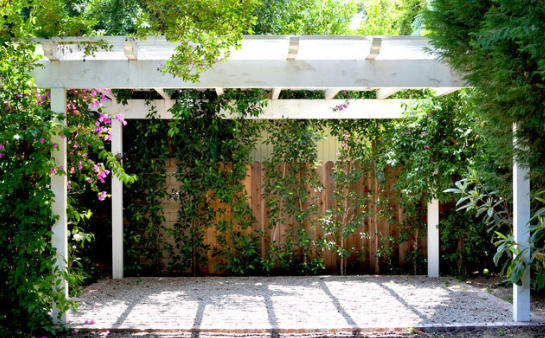
PERGOLA with vines
9 secret History of the pergola
A pergola is a structure that has a long history dating back thousands of years. It originated in ancient Egypt and has evolved over time in various cultures around the world. Here is a brief history of the pergola:
- Ancient Egypt (1400 BCE): The earliest recorded use of pergolas dates back to ancient Egypt. They were known as “pergulae” and were used as walkways that provided shade.
- Ancient Greece (5th century BCE): The Greeks adopted the concept of the pergola, but they expanded its functionality. They used it not only as a walkway but also as a framework for growing plants like grapes and other climbing vines.
- Ancient Rome (1st century BCE – 5th century CE): The Romans further developed and popularized the use of pergolas. They used them extensively in their gardens, often as a way to support grapevines for vineyards.
- Medieval Europe (5th – 15th century): Pergolas found their way into medieval European gardens, where they served both functional and ornamental purposes. They were often constructed in monasteries and castles, providing a place for quiet contemplation and relaxation.
- Renaissance (14th – 17th century): During the Renaissance, Italian architects and designers refined the concept of the pergola, incorporating elements of classical architecture. They often used columns and arches to enhance the aesthetic appeal.
- 18th – 19th century: Pergolas continued to be popular throughout Europe. In England, they were often used in formal gardens, and they also gained popularity in France. The designs became more intricate, incorporating wrought iron and other materials.
- Colonial America (17th – 18th century): Pergolas were introduced to the Americas by European settlers. They were used in gardens and often adorned with climbing plants.
- 20th century: Pergolas experienced a resurgence in popularity in the early to mid-20th century, particularly in the United States. They were used in suburban gardens and often made of wood, providing a shaded area for outdoor activities.
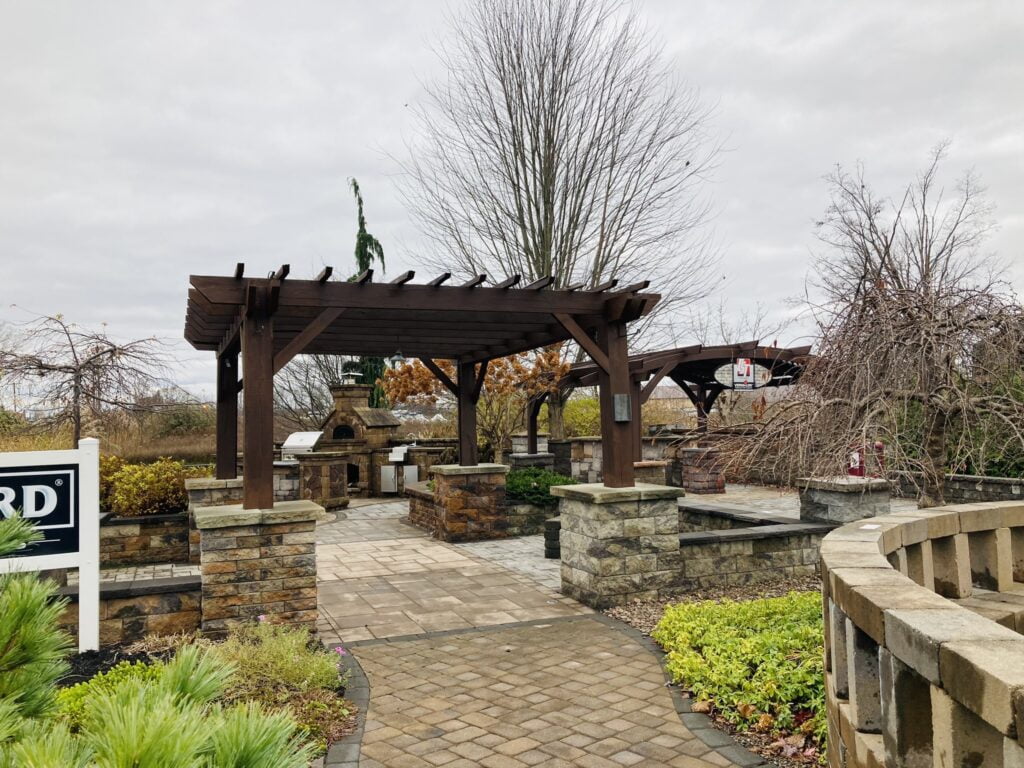
9. Contemporary Era (late 20th century – present): Pergolas continue to be a popular feature in gardens and outdoor spaces around the world. Modern materials such as aluminum and vinyl have expanded the range of options available for construction. Additionally, contemporary pergolas often incorporate advanced engineering techniques for stability and durability.
Today, pergolas serve a variety of purposes, from providing a shaded area for outdoor dining and relaxation to serving as a decorative element in gardens and landscapes. They come in various styles and materials, allowing homeowners to choose a design that complements their architectural preferences and outdoor space.
12 fascinating Types of pergola:
- Traditional Pergola: This is the classic design, consisting of vertical posts or pillars that support cross-beams and an open lattice roof. It provides partial shade and is often used as a decorative element in gardens and outdoor spaces.
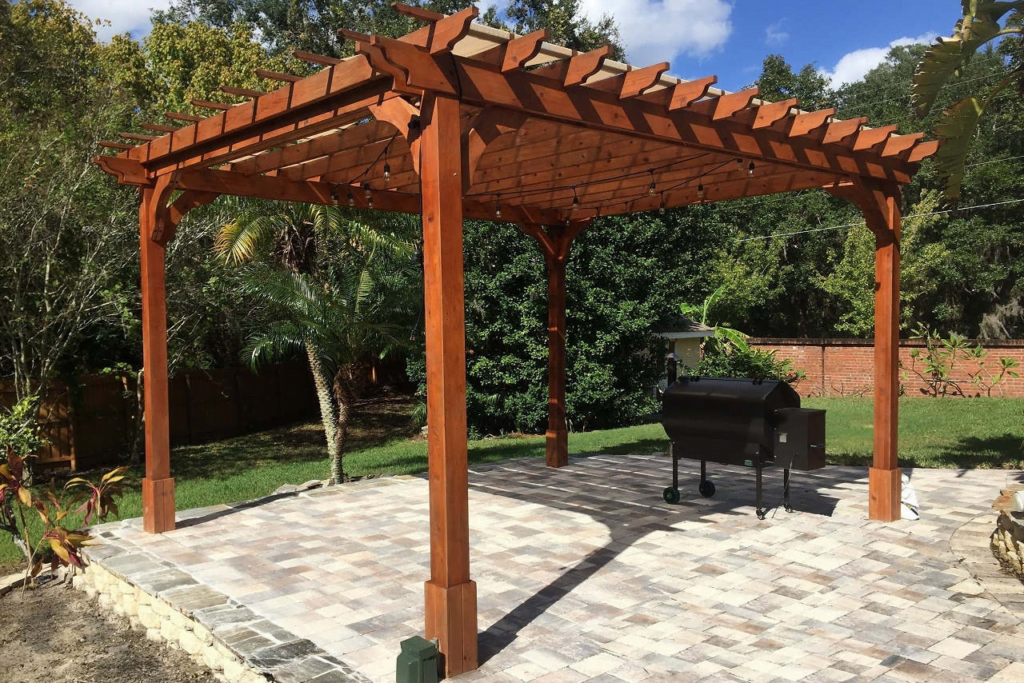
This traditional Pergola cost range from $1200 to $1500
- Gabled Pergola: This type features a pitched roof with two sloping sides that meet at a ridge in the center. It provides better protection from the elements compared to a standard flat-roofed pergola.
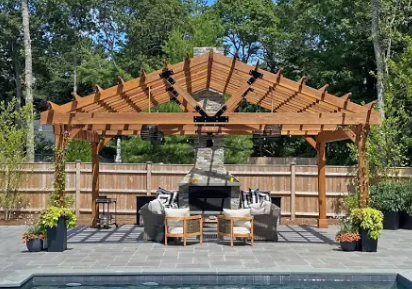
Gabled pergola above
- Flat Roof Pergola: As the name suggests, this type has a flat roof, which provides a clean and modern look. It’s a popular choice for contemporary-style homes and outdoor spaces.
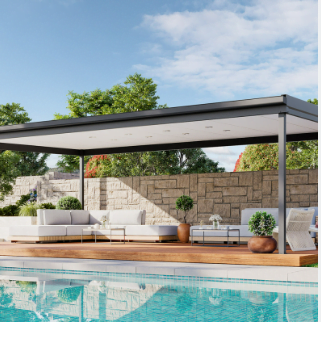
flat roof pergola
- Arched Pergola: Arched pergolas have a curved or arched top, adding an elegant and decorative touch to the structure. They can be standalone or attached to a building.
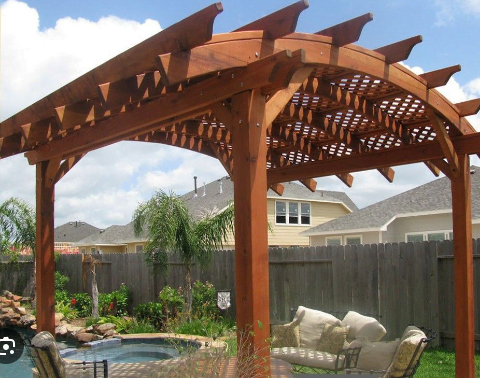
Arched Pergola
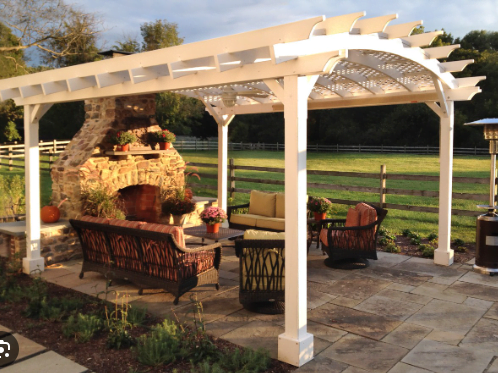
- Attached Pergola: This type is fixed to a structure, such as a house or a building. It often serves as an extension of the living space, providing a transition from indoors to outdoors.
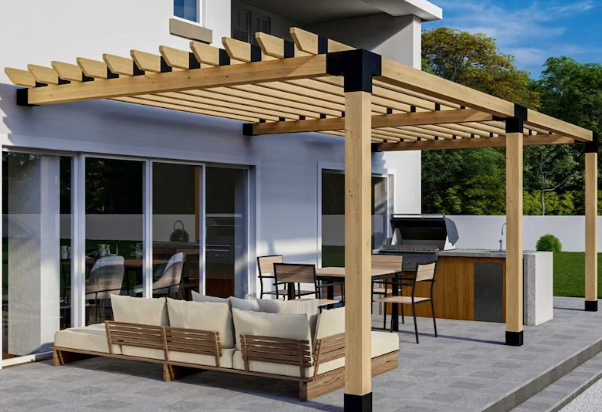
Attached Pergola

- Freestanding Pergola: Unlike attached pergolas, freestanding ones are independent structures that can be placed anywhere in a garden or outdoor space. They offer more flexibility in terms of placement and design.
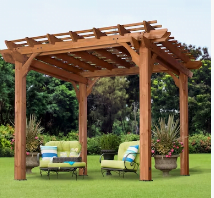
Freestanding Pergola:
- Corner Pergola: This type is designed to fit into a corner of a yard or garden, making efficient use of space. It provides a cozy and intimate outdoor area.
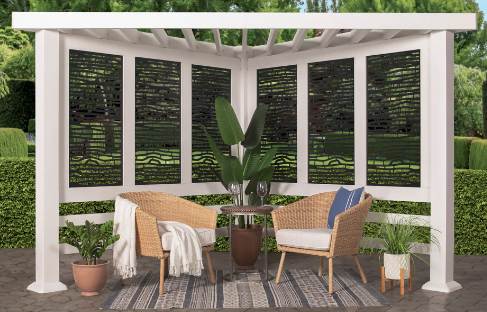
Corner Pergola
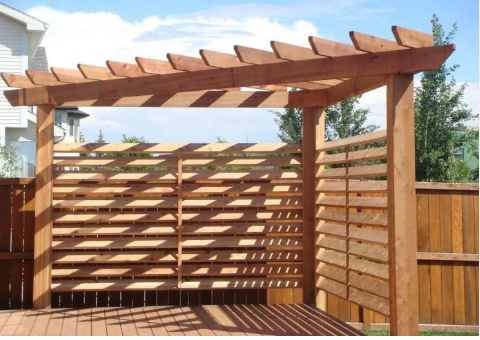
- Sail Pergola: Also known as a shade sail pergola, this type uses fabric or canvas sails instead of a traditional lattice roof. It offers a modern and flexible way to control sunlight and provide shade.
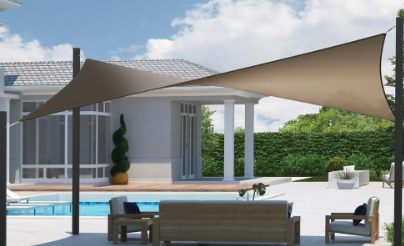
Sail pergola
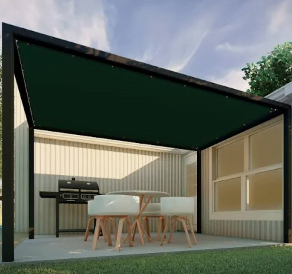
Sail Pergola
- Pergola with Canopy: Some pergolas come with a retractable or fixed canopy that can be pulled over the top for added shade and protection from rain. This feature increases the functionality of the pergola.
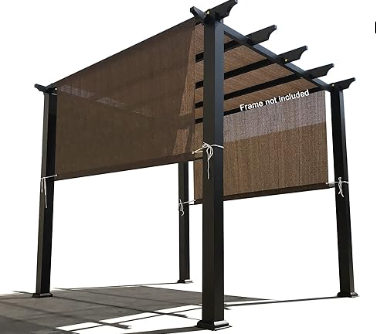
Pergola with Canopy
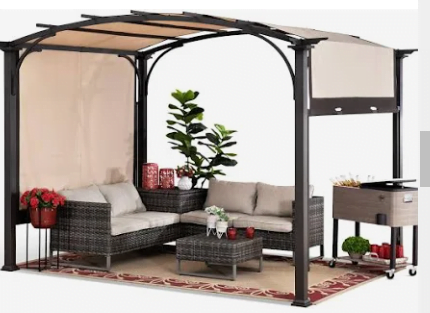
- Rustic Pergola: This type often incorporates natural elements like rough-hewn wood or stone, giving it a more organic and rustic appearance. It’s well-suited for gardens with a naturalistic or woodland theme.
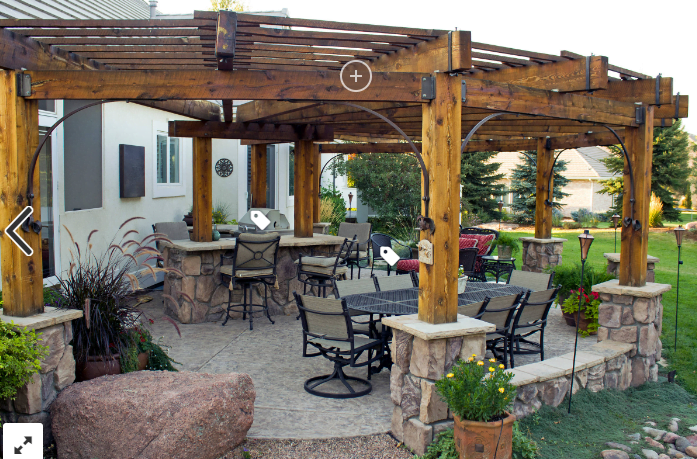
RUSTIC PERGOLA
- Japanese Pergola: Inspired by traditional Japanese architecture, this style often features clean lines, simple designs, and natural materials. It’s an excellent choice for creating a serene and Zen-like outdoor space.

Japanese Pergola above
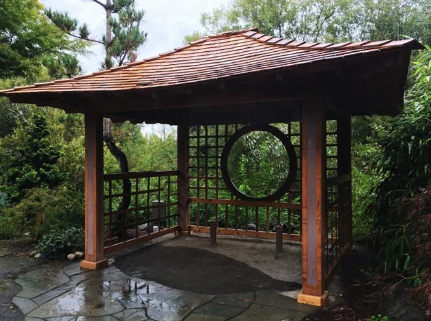
- Modern Pergola: These pergolas often have sleek, minimalist designs with clean lines and use materials like metal, glass, or concrete. They complement contemporary architectural styles.
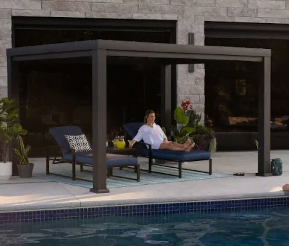
Modern Pergola:
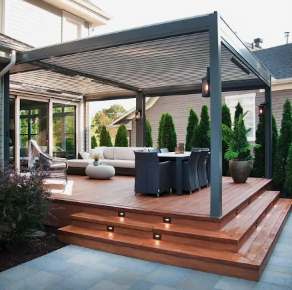
Remember, these are just general categories, and many pergolas can be customized to combine elements from different types. The choice of pergola type depends on factors such as architectural style, available space, intended use, and personal preferences.
Explanation of a true Pavilion
A Pavilion is a large, open structure or tent, providing shelter especially in a park or at a fair ( temporary public event A Pavilion is a flexible architectural open space that invites people to come in and spend time in it. It could be temporary or permanent and might even change its form and function. A light, usually open building used for shelter, concerts, exhibits, etc., as in a park or fair.
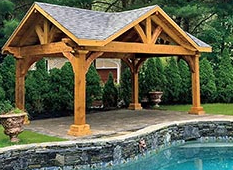
A pavilion is a roofed structure with open sides, designed to provide shelter from the elements while maintaining a strong connection with the surrounding environment. It typically consists of a roof supported by columns or pillars and is often used for gatherings, events, or as a place for relaxation. Pavilions are versatile in design, ranging from simple, functional structures to more elaborate, ornate designs, making them suitable for parks, gardens, and public spaces.
Unique History of the Pavilion
The term “pavilion” has a long and varied history, with its usage evolving over time in different cultures. Here’s a brief overview:
- Origins in Ancient Rome and Greece:
- The word “pavilion” is derived from the Latin word “papilio,” which means “butterfly.” It was used to refer to a temporary tent or structure, often associated with military encampments.
- In ancient Greece, a similar concept was known as a “palaistra,” which was a covered area used for athletic training and competitions.
- Medieval Europe:
- During the Middle Ages, pavilions were large tents used by nobility during outdoor events such as tournaments, feasts, and hunting parties. They were often elaborately decorated and served as temporary residences.
- Islamic Architecture:
- In Islamic architecture, a “iwan” is a type of pavilion characterized by a vaulted chamber with one side open, often facing a courtyard or garden. It’s a significant feature in many Islamic palaces, mosques, and other architectural structures.
- Chinese Architecture:
- In China, pavilions have a rich history. They were often standalone structures in gardens or parks, providing a place for rest, contemplation, or social gatherings. The design of Chinese pavilions is influenced by principles of feng shui and harmony with nature.
- Japanese Architecture:
- In Japan, pavilions are known as “shoin,” and they have a deep cultural significance. These are architectural spaces with tatami flooring, used for ceremonies, meetings, or as places for meditation.
- Mughal Architecture:
- The Mughal Empire in India also contributed to the pavilion’s architectural history. They created grand pavilions within palaces and gardens, often characterized by intricate marble work, domes, and ornate decorations.
- Colonial America:
- In the United States, pavilions were sometimes used to refer to open-air structures or small buildings used for social gatherings, often found in parks or public spaces.
- Modern Usage:
- In contemporary times, the term “pavilion” can refer to various structures, often used for outdoor events, exhibitions, or as architectural features in parks and gardens.
- Contemporary Architecture:
- Modern architects have reinterpreted pavilions with innovative designs. They can range from temporary structures made for specific events to permanent architectural elements in parks or urban environments.
- International Expositions:
- Pavilions play a significant role in world expos and international exhibitions. Countries often construct pavilions to showcase their culture, technology, and innovations.
Throughout history, the concept of a pavilion has remained versatile, adapting to various cultural, architectural, and functional needs. Today, pavilions continue to be important elements in both traditional and contemporary architecture. They serve as spaces for leisure, contemplation, cultural exchange, and public engagement.
13 amazing Types of Pavilions
- Garden Pavilion: These pavilions are typically found in gardens and parks, providing a place for visitors to rest, enjoy the surroundings, and sometimes host small gatherings or events.
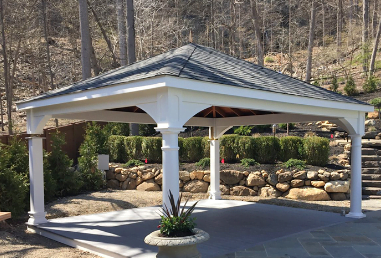
Garden pavilion
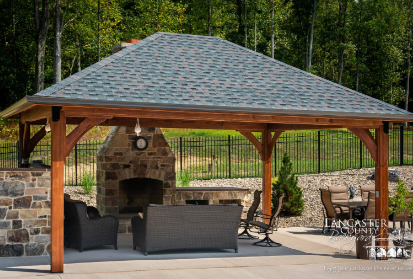
- Exhibition Pavilion: These pavilions are designed to host exhibitions, trade shows, and displays. They often have open floor plans to accommodate various exhibits and are equipped with facilities for lighting, sound, and presentations.
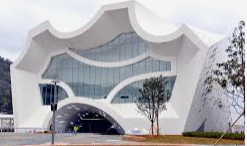
exhibition Pavilion
- Bandstand: A bandstand is a type of pavilion designed for musical performances, particularly for small bands or orchestras. They often have a raised platform for musicians and a sheltered area for the audience.
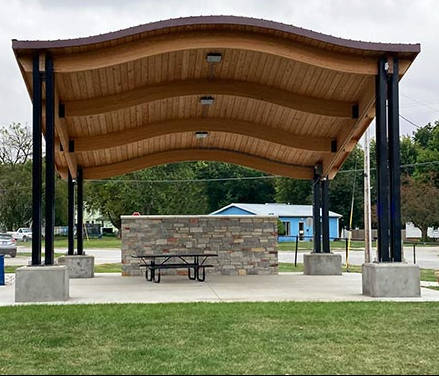
Bandstand Pavilion
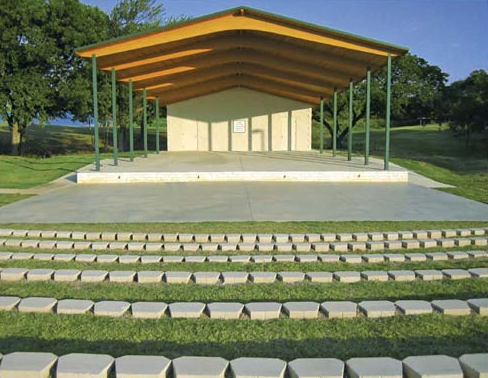
- Picnic Pavilion: These pavilions are commonly found in public parks and are designed to provide sheltered seating and tables for picnics and outdoor gatherings.
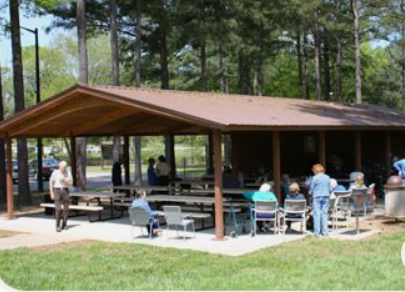
Picnic pavilion
- Summerhouse: A summerhouse is a small, often decorative pavilion used for relaxation and taking in the scenery. They are typically found in gardens or near bodies of water.
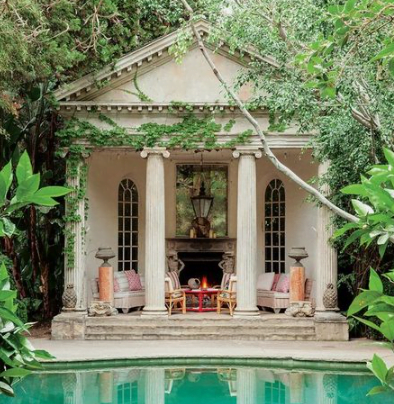
Summerhouse
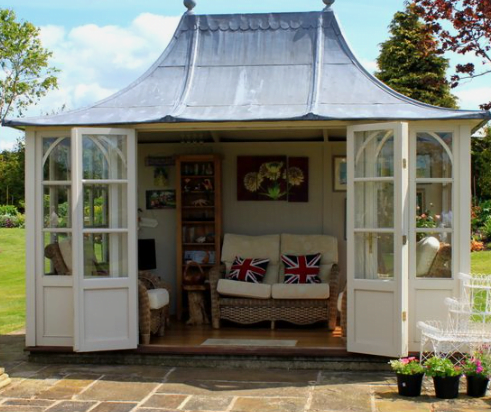
- Beach Pavilion: These are pavilions located on or near beaches, providing facilities such as changing rooms, restrooms, and sometimes snack bars for beachgoers.
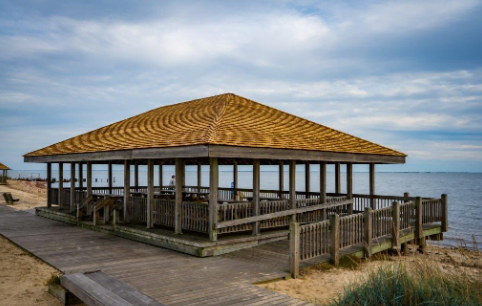
Beach pavilion
- Sports Pavilion: Often found in sports facilities like cricket or soccer fields, these pavilions provide changing rooms, restrooms, and sometimes viewing areas for spectators.
- Cultural Pavilion: These pavilions are designed to host cultural events, performances, and exhibitions. They may showcase art, music, dance, and other cultural expressions.
- Modern Exhibition Pavilion: These are large, often temporary structures used for major events like world expositions or international trade fairs. They can be highly specialized and technologically advanced.
- Botanical Garden Pavilion: These pavilions are located within botanical gardens and house specialized plant collections. They can range from simple greenhouses to more complex structures.
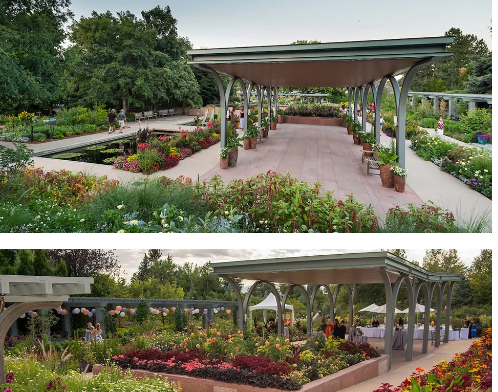
- Public Pavilion: A versatile term that can refer to any pavilion open to the public and designed for various purposes such as relaxation, education, or public events.
- Event Pavilion: These pavilions are designed to host events like weddings, parties, and conferences. They often have open layouts and can be temporary or permanent structures.
- Zen Pavilion: Often associated with Japanese gardens, these pavilions provide a serene and contemplative space for meditation and reflection.
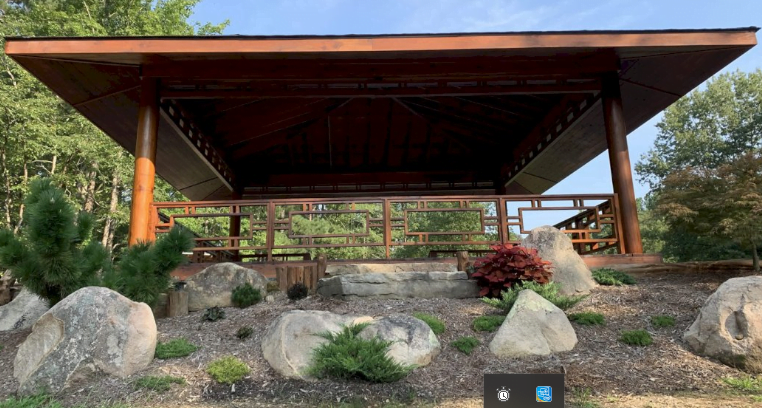
Zen Garden Pavilion.
What is a Gazebo?
A gazebo is a freestanding, open-sided outdoor structure, often round or hexagonal in shape, with a roof and sometimes screened or latticed sides. Gazebos serve both decorative and functional purposes, offering a charming focal point in gardens, parks, or yards. They provide a sheltered space for various activities such as dining, relaxation, or socializing while allowing for uninterrupted views of the surroundings.
Gazebos are freestanding or attached to a garden wall, roofed, and open on all sides. They provide shade, shelter from rain and a place to rest, while acting as an ornamental feature.
14 Spectacular Types of Gazebo
- Traditional Gazebo: These are often octagonal or hexagonal in shape, featuring a shingled roof and open sides. They are typically made of wood and can be quite ornate.

- Victorian Gazebo: Inspired by the Victorian era, these gazebos often have intricate details, decorative railings, and a more formal design.
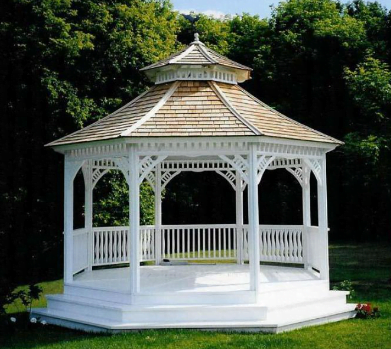
- Rotunda Gazebo: These are round gazebos with a domed roof. They are elegant and provide a panoramic view of the surroundings.
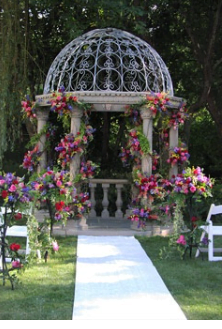
Rotunda Top Gazebo
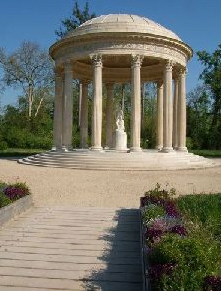
- Pagoda Gazebo: Originating from Asia, pagoda-style gazebos have multiple tiers of roofs with upturned eaves. They are often made of wood and can have a striking appearance.
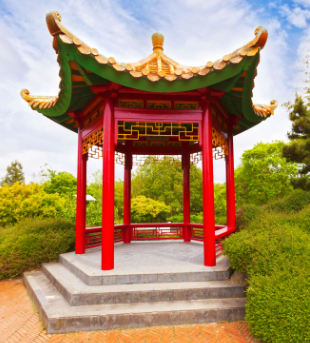
Pagoda Gazebo
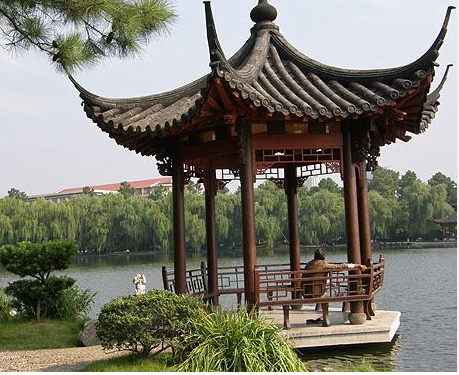
- Modern/Contemporary Gazebo: These gazebos have clean lines, minimalistic designs, and are often made of materials like metal, glass, or concrete.
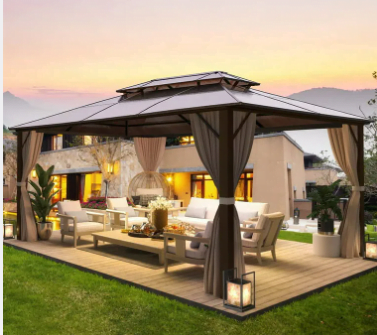
modern/Contemporary Gazebo
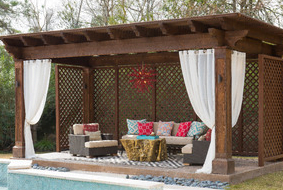
- Garden Gazebo: These are typically smaller structures designed for intimate gatherings in gardens. They often have lattice walls and roofs, providing a cozy, secluded space.
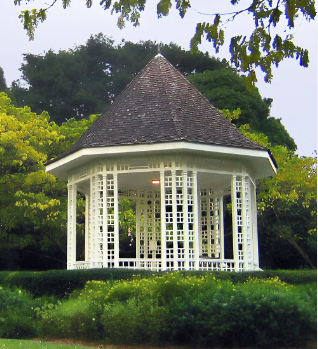
Garden Gazebo
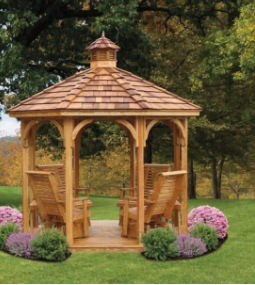
- Rotating Gazebo: These gazebos have a unique feature – they can rotate to follow the sun’s movement, providing constant shade or sunlight, depending on the user’s preference.
- Canvas or Fabric Gazebos: These gazebos have a frame covered with fabric or canvas. They are often portable and easy to set up, providing a temporary shelter for outdoor events.

Canvas Top Gazebo
- Hot Tub Gazebo: Specifically designed to house a hot tub or spa, these gazebos offer privacy and protection from the elements while enjoying a relaxing soak.
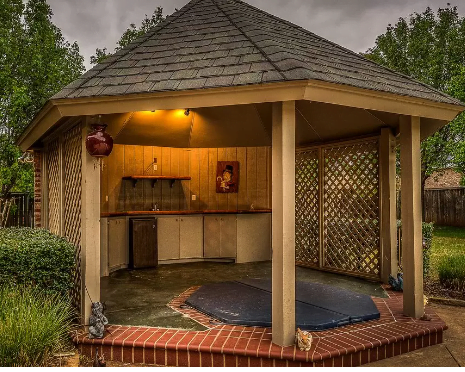
HOT TUB IN THE MIDDLE OF THE GAZEBO
- Screened Gazebo: Designed to keep out insects and bugs, these gazebos have screens on all sides, allowing you to enjoy the outdoors without being bothered by pests.
- Thatched Roof Gazebo: These gazebos have roofs made of thatch, which can create a rustic and natural appearance. They are often used in tropical or exotic settings.
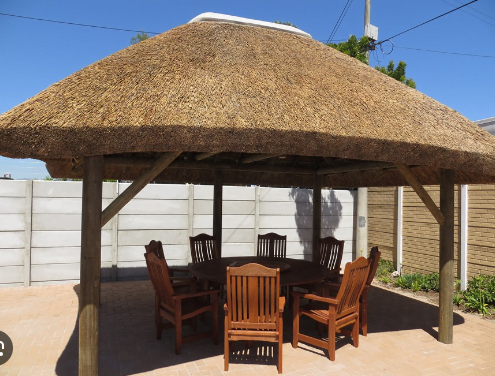
- Meditation or Yoga Gazebo: These are designed with tranquility in mind, often featuring an open design and natural materials to create a peaceful atmosphere.
- Commercial/Event Gazebo: These are often large, temporary structures used for events like weddings, outdoor parties, and exhibitions. They are easy to set up and take down.
Remember, the type of gazebo you choose should complement the overall design and purpose of your outdoor space. Consider factors like climate, available space, and intended use when selecting the right type for your needs.
This table show the Comparison between Pergola, Pavilions and Gazebo.
| Pergola: | Pavilion: | Gazebo |
| Open Framework: Pergolas typically consist of vertical posts or pillars that support cross-beams and an open lattice roof. This creates a partially shaded area. | Solid Roof Structure: Unlike pergolas, pavilions have a solid roof, providing full protection from the elements. | Freestanding Structure: A gazebo is a standalone structure, typically with a hexagonal or octagonal shape, but can be square or rectangular as well |
| Vines and Greenery: Pergolas are often designed to support climbing plants like vines, adding a natural, green element. | Enclosed Space: Pavilions are essentially outdoor rooms, often with walls (although they can be open on some or all sides). | Complete Roof and Open Sides: Gazebos have a complete roof but are open on all sides, providing a 360-degree view of the surroundings. |
| Aesthetic Appeal: They are primarily ornamental and used for defining an outdoor space, creating visual interest, and providing a sense of enclosure without blocking views entirely. | Greater Privacy: Due to their enclosed nature, pavilions offer more privacy compared to pergolas and gazebos. | Focal Point and Gathering Space: They often serve as a focal point in a garden or outdoor space and can be used for small gatherings or as a quiet retreat. |
| Versatile Use: Pergolas can be used to define walkways, cover outdoor dining areas, or create a focal point in a garden. | Functional Spaces: They are ideal for hosting events, providing shelter for outdoor furniture, or creating a dedicated outdoor living area. | Decorative Details: Gazebos are often adorned with intricate architectural details, creating an aesthetically pleasing addition to a landscape. |
| Design Flexibility: They come in various styles and materials, offering a wide range of customization options. | Sturdy Construction: Pavilions are generally more substantial structures, designed to withstand a range of weather conditions. | Covered Seating Area: They provide a shaded area for relaxation and can be furnished with seating or used for outdoor dining. |
Resources
https://www.fifthroom.com/pavilions
https://en.wikipedia.org/wiki/Pergola









